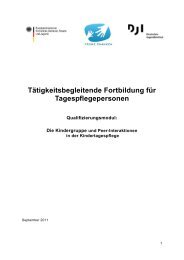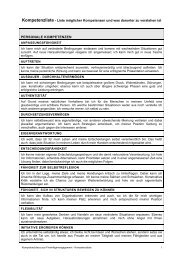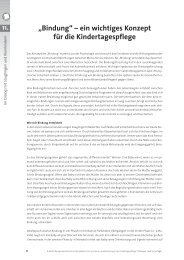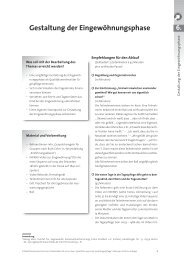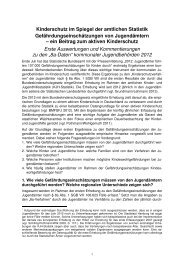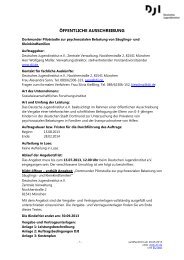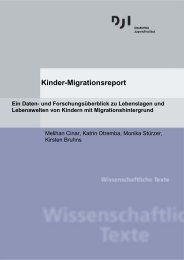download - Deutsches Jugendinstitut e.V.
download - Deutsches Jugendinstitut e.V.
download - Deutsches Jugendinstitut e.V.
You also want an ePaper? Increase the reach of your titles
YUMPU automatically turns print PDFs into web optimized ePapers that Google loves.
In the Czech Republic, responsibilities are clearly laid down within the varying levels of<br />
operation.<br />
In Lithuania, measures and programmes are for the most part centrally determined and<br />
certain features indicate a more welfare-based approach.<br />
Unlike in Lithuania where the integration programmes exist in parallel with socialpolitical<br />
measures, the strategy in the Czech Republic is conceived as a framework<br />
programme and its implementation is embedded in regular welfare work.<br />
The actors in the Czech Republic have a substantially greater scope of action in the<br />
concrete implementation of programmes.<br />
The degree of Roma participation in the implementation of programmes in both<br />
countries varies greatly; for example, Roma are involved as advisors and coordinators in the<br />
Czech Republic.<br />
Recommendations for action<br />
Integration programmes on a national level should be designed to provide sufficient<br />
scope for flexible implementation on a local level.<br />
In order to achieve a higher level of participation among the target group, the minority’s<br />
needs should be addressed more precisely to enable the development of suitably tailored<br />
projects and services.<br />
The motivation of the target group will be strengthened by participation in the planning<br />
of projects.<br />
Integration will be improved through a comprehensive approach, i.e. through the<br />
involvement of the complete social environment (e.g. family, schools, etc.).<br />
A significantly stronger cultural sensitisation of the population and actors towards the<br />
Roma is necessary; for example, campaigns such as the EU campaign presented here, “All<br />
different – All equal”, can also accompany national integration programmes. This is<br />
particularly appropriate in areas in which the population and local authorities are extremely<br />
reserved towards integration programmes for minorities such as the Roma.<br />
It would also be wise to include Roma history (and/or that of other minorities) in<br />
school curricula.<br />
What also appears to be important is national coverage and evaluation of these<br />
programmes: this has not yet taken place in either of the two countries.<br />
51



